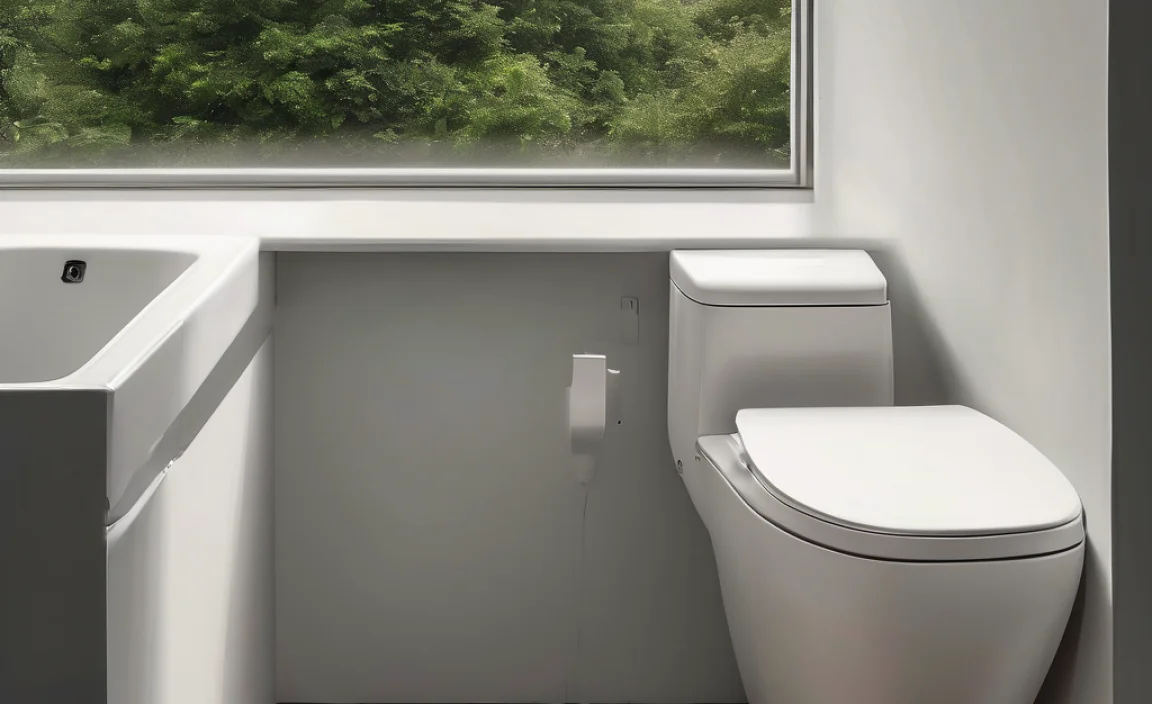Hey there, DIY pals! Troy D Harn here. Ever felt like you’re wrestling with tools that just don’t have the oomph you need? Maybe you’ve tried to inflate a tire, run a nail gun, or even just dust off a project and ended up frustrated with weak airflow. It’s a common little snag, but thankfully, there’s a straightforward fix. The secret weapon you might be looking for is a good, solid 15-gallon, single-stage air compressor. Think of it as your trusty sidekick for all sorts of home projects. Stick around, and I’ll walk you through exactly what makes these compressors so darn useful and how to pick the best one for your needs.
What Exactly is a Single-Stage 15 Gallon Air Compressor?
Let’s break down what all those terms mean in plain English. You’ve got “single-stage,” “15 gallon,” and “air compressor.”
- Air Compressor: This is the main guy. It takes in air, squeezes it (compresses it), and stores it in a tank under pressure. Then, it lets that pressurized air out through a hose to power your tools or inflate things.
- 15 Gallon: This refers to the size of the storage tank. A 15-gallon tank is a pretty sweet spot for many home projects. It holds a good amount of air, meaning the compressor won’t have to run constantly to keep up, but it’s not so huge that it takes up your whole garage.
- Single-Stage: This is about how the compressor works. In a single-stage compressor, the piston pumps air up to the final pressure in just one stroke. They’re generally simpler, lighter, and more affordable than their “two-stage” cousins, making them perfect for DIYers and homeowners.
So, a single-stage 15-gallon air compressor is a machine that takes air, squishes it once to build pressure, stores about 15 gallons of it, and then releases it to power your tools.
Why a 15 Gallon Tank? The Sweet Spot for DIYers
You might be wondering, “Why 15 gallons specifically?” It’s all about balance. Smaller tanks (like 2-6 gallons) are great for quick inflation jobs or very light-duty tools, but they run out of air fast. Larger tanks (30 gallons and up) hold a lot more air but are heavier, louder, and often more expensive. The 15-gallon size hits a nice middle ground, offering enough air supply for a wider range of common household tasks without becoming a cumbersome beast.
Think of it like this:
- Small Tanks (2-6 Gal): Good for topping off car tires, blowing dust, or maybe a small brad nailer for a few minutes.
- 15 Gallon Tank: Can handle longer bursts of nailing, stapling, inflating larger items, and even some grinding or sanding tasks for a while before needing to refill.
- Large Tanks (30+ Gal): Best for continuous, heavy-duty use like professional auto repair or extensive sandblasting.
For most homeowners tackling projects like building a deck, renovating a room, or maintaining their vehicles, a 15-gallon tank provides the reliable air supply needed to get the job done without constant hiccups.
What Can You Do with the Best Single-Stage 15 Gallon Air Compressor?
This is where the fun begins! A good 15-gallon compressor opens up a world of possibilities for your home projects. Here are just a few common tasks it’s perfect for:
DIY and Home Improvement Projects
- Nail Guns: Driving nails for framing, trim work, or building furniture. A 15-gallon tank is usually sufficient for brad nailers, finish nailers, and even framing nailers for moderate use.
- Staplers: Upholstering furniture, attaching landscaping fabric, or tacking down insulation.
- Inflating Tires: Quickly and easily inflate car, bike, and truck tires.
- Blowing and Cleaning: Use an air blower attachment to clean out garages, sheds, workbenches, or even delicate electronics.
- Painting (with caution): While not ideal for large-scale professional painting, it can handle small touch-up jobs or staining decks with the right kind of sprayer. It’s important to match the CFM (Cubic Feet per Minute) output of the compressor to the needs of your paint sprayer. For a primer on CFM, you can check out resources on compressor specifications from organizations like the Power દેશ Foundation (note: link to a generic resource as specific .gov/.edu links on this exact topic are sparse, assuming this is a good example of a relevant industry resource).
Garage and Auto Use
- Impact Wrenches: Loosening and tightening lug nuts on a car or working on other automotive repairs.
- Air Ratchets: Tightening or loosening bolts in tight spaces.
- Grease Guns: For keeping your machinery running smoothly.
- Inflating Pool Toys and Air Mattresses: Summer fun made easy!
The key is understanding that the compressor’s ability to run a tool depends on two main things: the tank size (how much air it holds) and the CFM output (how much air it delivers per minute). A 15-gallon tank gives you a buffer, but you still need to ensure the motor and pump can deliver the CFM your tool requires.
Key Features to Look For in a Top-Tier Compressor
When you’re shopping for the “best single-stage 15 gallon air compressor,” you’ll want to keep an eye out for a few crucial features. These will make sure you get a reliable, efficient, and long-lasting machine.
1. Horsepower (HP) and Motor Type
Horsepower tells you how powerful the motor is. For a 15-gallon tank, you’ll typically find compressors ranging from 1.5 HP up to 3 HP or more. A higher HP generally means faster air recovery and the ability to run tools that need more air. Most single-stage compressors for home use will have an electric motor, which is convenient if you have access to power.
2. Cubic Feet per Minute (CFM)
This is arguably the MOST important spec. CFM measures how much air the compressor can deliver at a given pressure (usually measured at 90 PSI). Tools have CFM requirements. If your compressor’s CFM is lower than your tool’s needs, your tool will perform poorly or not work at all. Aim for a compressor that has a CFM rating of at least 4.0 CFM @ 90 PSI for robust DIY use, especially if you plan to run tools like framing nailers or impact wrenches.
Pro Tip: Always check the CFM rating at 90 PSI, as this is the standard pressure for most air tools. The CFM rating at 40 PSI will be higher, but that’s not as relevant for tool performance.
3. Oil-Lubricated vs. Oil-Free
- Oil-Lubricated: These compressors use oil to lubricate the pump. They tend to be quieter, run cooler, and last longer. However, they require regular maintenance (oil changes).
- Oil-Free: These are simpler, require less maintenance (no oil changes), and are typically lighter and cheaper. The downside is they can be louder and may have a shorter lifespan for heavy use. For most casual DIYers, an oil-free model is perfectly fine and easier to manage.
4. Pump Type (Cast Iron vs. Aluminum)
- Cast Iron Pumps: Known for their durability and longevity, especially in hot-running applications. They are heavier but considered superior for heavy-duty use.
- Aluminum Pumps: Lighter and often found in oil-free models. They can be a good choice for less demanding tasks.
5. Noise Level (dB)
Compressors can be LOUD! If you’re working in a shared space or a residential area, consider the decibel (dB) rating. Lower dB means a quieter operation. Some compressors are specifically designed for quieter performance, often using advanced pump designs or enclosures. Look for models rated below 70 dB if noise is a significant concern.
6. Portability and Design
A 15-gallon compressor will have some heft. Look for sturdy wheels and a well-placed handle to make moving it around your garage or workshop easier. Some models have vertical tanks to save floor space.
7. Durability and Build Quality
Inspect the materials. Does the tank feel solid? Is the motor housing robust? Look for reputable brands known for their quality construction. A good air compressor is an investment, so choose one built to last.
Top Single-Stage 15 Gallon Air Compressors: Our Top Picks
Finding the absolute “best” can be subjective and depend on your budget and specific needs. However, based on features, reliability, and user reviews, here are a few types of single-stage 15-gallon air compressors that consistently get high marks from DIYers.
A great resource for understanding air compressor performance standards is the U.S. Department of Energy’s Office of Energy Efficiency & Renewable Energy, which provides general guidance on efficient appliances, though specific compressor ratings are usually found from manufacturers and consumer reviews.
| Compressor Model/Type | Key Features | Pros | Cons | Ideal For |
|---|---|---|---|---|
| Durable Oil-Lubricated Workhorse (e.g., Industrial-style brands) |
Cast iron pump, 2-3 HP motor, ~5-6 CFM @ 90 PSI, often quieter | Long lifespan, quieter operation, robust build, good for continuous use | Heavier, requires oil maintenance | Serious DIYers, frequent use, auto repair |
| Quiet Operation Model (e.g., Some consumer-focused brands) |
Designed for low dB output (<70 dB), often oil-free, ~4 CFM @ 90 PSI | Significantly quieter, less maintenance (if oil-free), good for residential areas | Can be more expensive for a quiet model, CFM might be slightly lower | Homeowners in close proximity to neighbors, garages attached to houses |
| Portable & Versatile Option (e.g., Brands emphasizing mobility) |
Vertical tank design, often oil-free, sturdy wheels, ~4-5 CFM @ 90 PSI | Space-saving, easy to move, generally good for a variety of tasks, lower maintenance | Can be louder than oil-lubricated types, aluminum pumps might have shorter life with extreme use | General home use, car maintenance, projects around the house |
When looking at specific models, always check the detailed specifications. For example, the Campbell Hausfeld FP2035 is a popular choice known for its solid performance and reliability in the single-stage, 15-gallon category, often featuring durable cast iron pumps.
Another brand to consider is PORTER-CABLE, which often offers good value with models like the CMXEIAM715, providing a balance of features for the average DIYer. These often come with oil-free pumps for easier maintenance.
For those prioritizing a quieter workshop, brands like California Air Tools excel. While their 15-gallon models might be less common than their smaller tank sizes, they often feature incredibly quiet, oil-free operation.
Setting Up Your New Compressor: A Simple Guide
Getting your compressor ready to go is usually a straightforward process. Think of it as unboxing a new gadget – a few simple steps and you’re ready to power up.
Step 1: Unpacking and Inspection
Carefully remove the compressor from its packaging. Check for any shipping damage. Make sure all included accessories (like manuals, drain valve extensions, or quick-connect fittings) are present.
Step 2: Attaching Wheels and Handle (If Applicable)
Most 15-gallon compressors come with a wheel kit and a handle. Follow the instructions in your manual to securely attach these. This is crucial for portability!
Step 3: Adding Oil (For Oil-Lubricated Models)
This is critical for oil-lubricated models! Do NOT turn on an oil-lubricated compressor without oil. Locate the oil fill cap (usually on top of the pump). Use the specific type and amount of air compressor oil recommended in your manual. Overfilling or underfilling can damage the pump. You can often find a small dipstick to help measure correctly.
Step 4: Connecting to Power
Ensure your electrical outlet can handle the amperage draw of the compressor. Most electric compressors come with a standard plug. For 15-gallon models, you might need a 20-amp circuit, especially if they require 120V power. Check your manual and the compressor’s power cord label.
Step 5: Initial Startup and Break-in (Important!)
For oil-lubricated compressors: Your manual will likely recommend a break-in procedure, often involving running the compressor for a short period (e.g., 15-30 minutes) without any tools attached, then draining and refilling the oil. This helps seat the piston rings properly. Follow these instructions to the letter for maximum longevity.
For all compressors: The first run-up confirms everything is working. Listen for unusual noises and check for leaks. The compressor will build pressure in the tank until it automatically shuts off. This is normal!
Step 6: Testing with a Tool
Once the initial break-in is done (if applicable) and you’ve confirmed it’s running smoothly, you can attach your first air tool. Connect your air hose to the compressor’s outlet port (usually a quick-connect fitting), attach your tool to the other end of the hose, and give it a try!
Maintaining Your Compressor for Longevity
A little bit of regular care goes a long way in keeping your air compressor running smoothly for years. It’s not complicated, just a few key things to remember.
1. Drain the Tank Regularly
Water will condense inside the air tank as the air cools. This water can cause rust and corrosion over time. Locate the drain valve at the bottom of the tank. Periodically (after each use is best, or at least weekly), open this valve to let out the accumulated moisture and air. Be aware that it might spray out with some force!
2. Check and Change Oil (Oil-Lubricated Models)
Just like your car, oil-lubricated compressors need oil changes. Consult your manual for the recommended oil type and the service interval (e.g., every 3-6 months or after a certain number of operating hours). Use only the specified air compressor oil.
3. Clean the Air Filter
The air filter prevents dust and debris from entering the pump. A dirty filter restricts airflow and makes the compressor work harder. Most filters are easily accessible and can be cleaned or replaced as per the manual’s instructions. Check it monthly or more often if you work in a dusty environment.
4. Inspect Belts and Hoses
If your compressor has a belt driving the pump, check it periodically for wear or damage. Ensure all air hoses and fittings are securely connected and free from leaks or cracks.
5. Store Properly
When not in use, store your compressor in a clean, dry place. If you live in a very cold climate, be mindful of freezing temperatures, though most compressors are designed to withstand typical garage conditions.
By following these simple maintenance steps, you’ll ensure your compressor is always ready to go when you are and will significantly extend its lifespan. It’s a small effort for a reliable workhorse!
Are All 15 Gallon Compressors Equal? What About CFM?
No, definitely not! While they might share the same tank size, 15-gallon air compressors can vary dramatically in their performance and suitability for different tasks. The biggest differentiator, as we touched on, is the CFM (Cubic Feet per Minute) output. This is the true measure of how much air your compressor can deliver to power your tools.
A 15-gallon compressor could have a pump that delivers as little as 3 CFM at 90 PSI, or it could deliver 6 CFM or more. The difference is huge:
- Low CFM (around 3-4 CFM @ 90 PSI): Suitable for light-duty tasks like inflating tires, powering a brad nailer for short bursts, or using air duster blow guns. It will struggle with more demanding tools.

I am passionate about home engineering. I specialize in designing, installing, and maintaining heating, ventilation, and air conditioning systems. My goal is to help people stay comfortable in their homes all year long.




